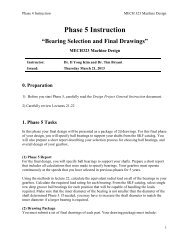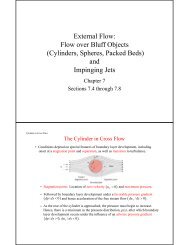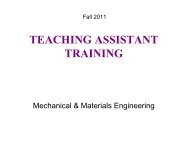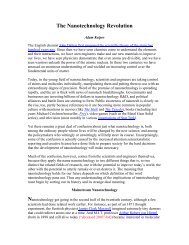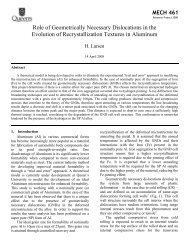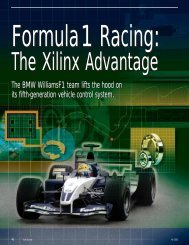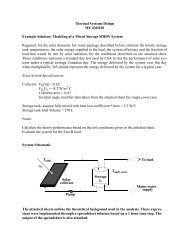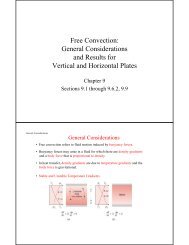Numerical Study of Passive and Active Flow Separation Control ...
Numerical Study of Passive and Active Flow Separation Control ...
Numerical Study of Passive and Active Flow Separation Control ...
Create successful ePaper yourself
Turn your PDF publications into a flip-book with our unique Google optimized e-Paper software.
I x = 0.312C<br />
5. Concluding Remarks<br />
Fig. 31. Spectra <strong>of</strong> pressure fluctuations <strong>of</strong> Case 2<br />
34<br />
(d) x = 0.577C<br />
We have studied the flow separation control with vortex generators using an approach<br />
that combines the body-fitted mesh for the airfoil in a curvilinear coordinate system <strong>and</strong><br />
the immersed boundary method for the vortex generator in the context <strong>of</strong> direct numerical<br />
simulation. Our study includes the following three cases: 1) uncontrolled flow separation<br />
(baseline case), 2) flow separation control with passive vortex generators (Case 1), <strong>and</strong> 3)<br />
flow separation control with active vortex generated (Case 2) over a NACA0102 airfoil at<br />
a 6° angle <strong>of</strong> attack. In the uncontrolled baseline case, the naturally separated flow is<br />
dominated by f ≈ 15 U / C , which represents the frequency <strong>of</strong> vortex shedding from<br />
sep<br />
∞<br />
the separated shear layer. In Case 1, the time- <strong>and</strong> span-wise averaged results have shown<br />
that the passive vortex generators are able to reattach the separated flow in the immediate<br />
downstream region over an extent <strong>of</strong> 0.1C. However, the reattached flow separates again<br />
<strong>and</strong> the separated shear layer undergoes transition <strong>and</strong> reattachment forming the second<br />
separation bubble. Thus, the passive vortex generators reduce the size <strong>of</strong> the separation<br />
zone by more than 80%. The simulation <strong>of</strong> Case 2 has shown that active vortex<br />
generators are more effective than the passive ones because the separation is not visible<br />
in the time- <strong>and</strong> span-wise averaged mean flow. At the small angle <strong>of</strong> attack simulated in<br />
this study, flow separation control does not produce significant gain in lift or reduction in<br />
drag, but it does provide a first step leading toward a more thorough underst<strong>and</strong>ing <strong>of</strong>



